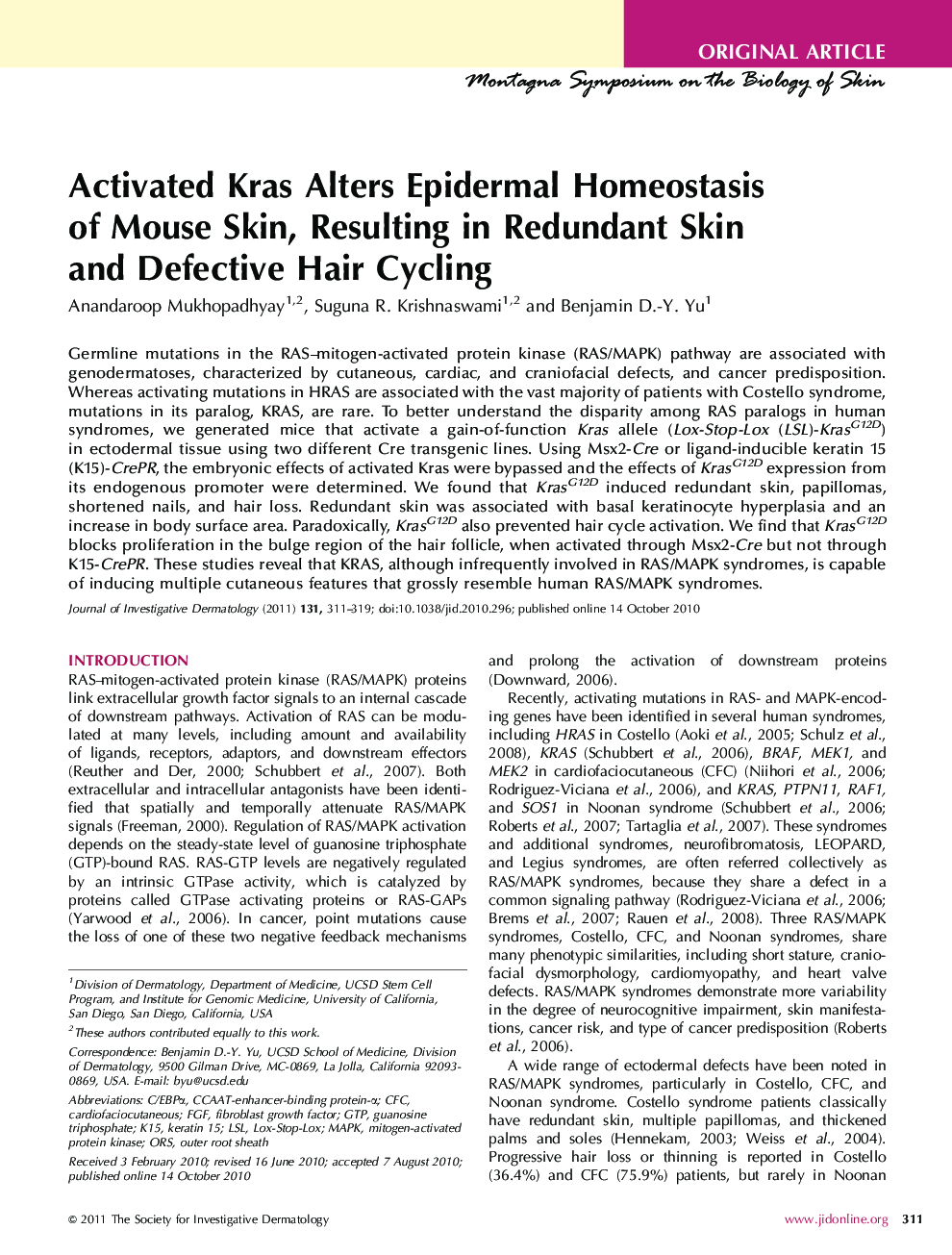| کد مقاله | کد نشریه | سال انتشار | مقاله انگلیسی | نسخه تمام متن |
|---|---|---|---|---|
| 3216597 | 1203575 | 2011 | 9 صفحه PDF | دانلود رایگان |

Germline mutations in the RAS–mitogen-activated protein kinase (RAS/MAPK) pathway are associated with genodermatoses, characterized by cutaneous, cardiac, and craniofacial defects, and cancer predisposition. Whereas activating mutations in HRAS are associated with the vast majority of patients with Costello syndrome, mutations in its paralog, KRAS, are rare. To better understand the disparity among RAS paralogs in human syndromes, we generated mice that activate a gain-of-function Kras allele (Lox-Stop-Lox (LSL)-KrasG12D) in ectodermal tissue using two different Cre transgenic lines. Using Msx2-Cre or ligand-inducible keratin 15 (K15)-CrePR, the embryonic effects of activated Kras were bypassed and the effects of KrasG12D expression from its endogenous promoter were determined. We found that KrasG12D induced redundant skin, papillomas, shortened nails, and hair loss. Redundant skin was associated with basal keratinocyte hyperplasia and an increase in body surface area. Paradoxically, KrasG12D also prevented hair cycle activation. We find that KrasG12D blocks proliferation in the bulge region of the hair follicle, when activated through Msx2-Cre but not through K15-CrePR. These studies reveal that KRAS, although infrequently involved in RAS/MAPK syndromes, is capable of inducing multiple cutaneous features that grossly resemble human RAS/MAPK syndromes.
Journal: Journal of Investigative Dermatology - Volume 131, Issue 2, February 2011, Pages 311–319